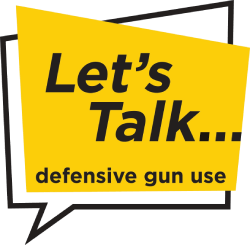In what seems like a past life, I started my career as a firefighter and EMT in Indiana. I split my time between rural and urban areas, so I never knew what surprises might come up.
I started at a small volunteer fire department in Huntertown, Indiana. My partner and I worked for ourselves, so we frequently had to grab the equipment to drive to the scene because we were the closest ones to the department. Let me tell you, back then, training included a lot of “baptism by fire.” Thirty years later, and I still remember some “I wish someone would have told me that before moments.”
For a while, I worked out of a hospital in Huntington, Indiana, that covered the entire county, so response times could end up being on the high side. I even spent some time working in the emergency room at Parkview Hospital in Ft. Wayne.
Needless to say, times have changed, and equipment has come a long way since then. Heck, back then, tourniquets were not on your go-to list of things to use, and now it seems like you are seeing them in a lot of everyday carry pocket dumps on Facebook.
With that being said, I thought I would start an ongoing series about emergency care, including caring for someone in a high-stress situation.
Why is emergency first aid so important?
Knowing how to give emergency first aid can mean the difference between life and death in a life-threatening situation. No matter where you are—at home, at work, or in public—unexpected things can occur at any time, so it is important that your training includes emergency medical care. I’m going to write a series of articles about why it’s important to know emergency first aid, who can benefit from learning it, and what kind of training is available.
Studies have identified bleeding as the most frequent preventable cause of death in trauma, accounting for 40% of trauma-related deaths globally. It is the #1 cause of preventable death from injuries involving bleeding.
How important is it to know first aid in an emergency?
Accidents can happen to anybody, and having emergency first aid knowledge can make a significant difference in how you respond to such situations. Understanding the fundamentals of first aid will allow you to treat an injured person immediately and stop their injuries from getting worse, improving their chances of survival.
For example, suppose someone has stopped breathing or is having a heart attack. In that case, CPR can keep blood and oxygen flowing to vital organs until help arrives.
According to the “STOP THE BLEED” training, the average time for a person to die from bleeding is between 2 and 5 minutes. The average time for EMS to arrive is between 7 and 10 minutes. By the time help gets to you, it may be too late.
When every second counts, what you do and how you do it can save someone’s life.
Who should learn emergency first aid?
Everybody, regardless of age or the environment they are in, can benefit from learning emergency first aid. However, it is more important for some people than others. For example, parents should learn first aid because children are more likely to get hurt.
People who carry a firearm daily have an increased chance of running into a situation involving heavy bleeding.
Outdoor enthusiasts like hikers and campers should learn first aid skills because they are more likely to have medical emergencies in remote areas where professional help is unavailable.
Types of First Aid Training
Various organizations provide training for people of all ages and skill levels. Basic first aid classes often cover topics including evaluating an accident scene, treating minor injuries, and CPR.
Advanced courses, like “wilderness first aid,” might teach more complicated stuff, like how to treat injuries in remote areas.
You can find “tactical” classes, for lack of a better term, that will go into greater depth on what to do in a high-threat environment. The National Association of Emergency Medical Technicians (NAEMT) even had a TECC for Law Enforcement Officers and First Responders (TECC-LEO) class.
Conclusion
Everyone should know how to offer first aid in an emergency, and it’s never too late to learn. By taking a course on first aid, you’ll be better prepared to deal with emergencies. Remember that being prepared for an emergency can greatly affect a situation’s outcome. It all starts with knowing what to do.


